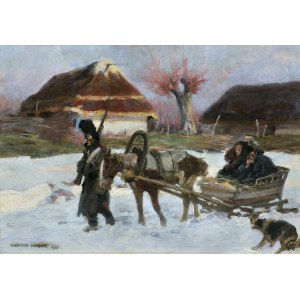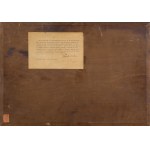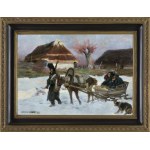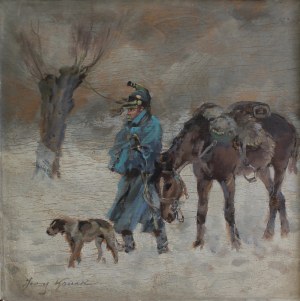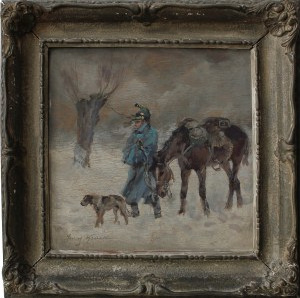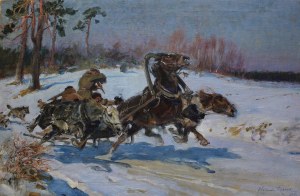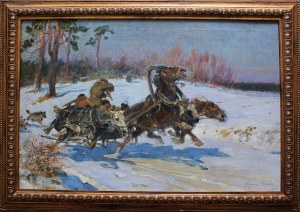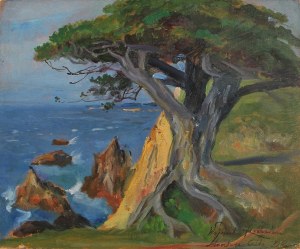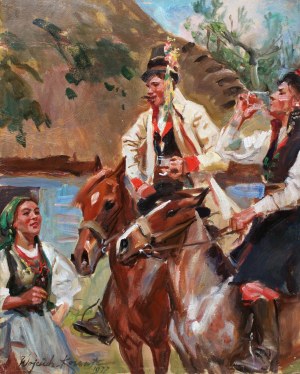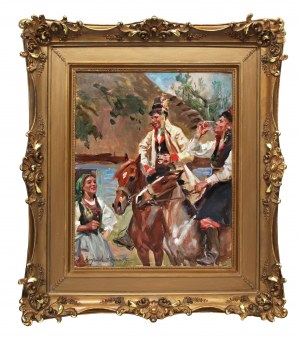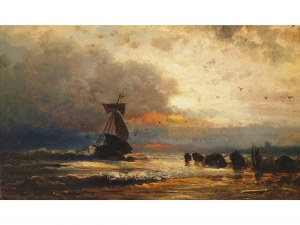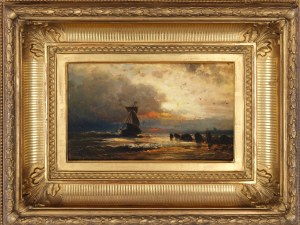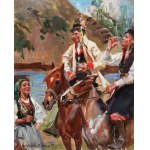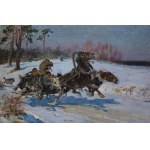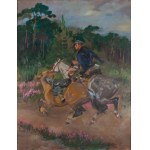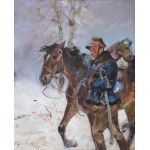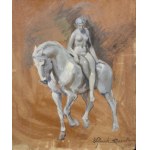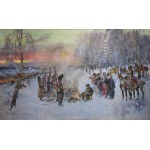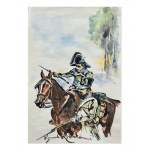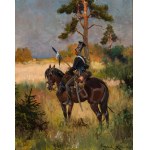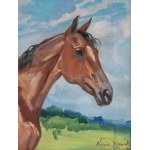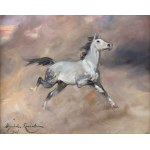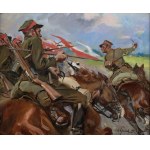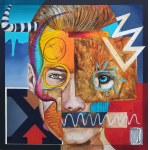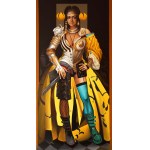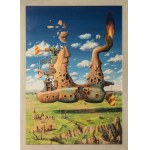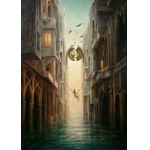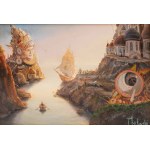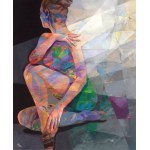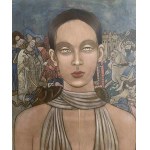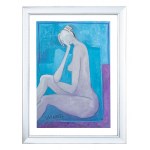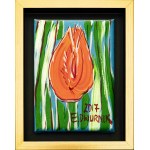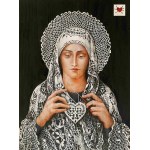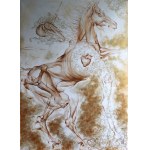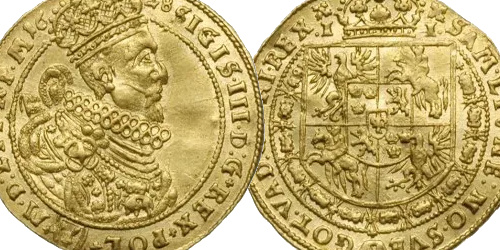38.0 x 54.0 cm - oil, mahogany board signed l.d.: WOJCIECH KOSSAK | 1910
On the reverse: acknowledgement of authenticity signed by Jan Hoplinski dated September 1943; illegible inscription in black ink at the bottom edge; l.d. sticker of Róza Aleksandrowicz's Kraków workshop.
Painting on mahogany board, 38 x 54 cm, depicting a soldier leading a horse, harnessed to a sleigh, on which sits a Napoleonic officer wrapped in a coat, accompanied by a woman in a sheepskin coat; to the right, at the bottom, a barking dog; in the background, behind a fence, a cottage, a willow tree and a barn against a background of gray sky (at the bottom left, signature: Wojciech Kossak 1910) - I consider this to be undoubtedly an authentic work by Wojciech Kossak, dating from his good creative period. In this painting one sees Kossak's crystallized creative individuality.
Jan Hoplinski, of the confirmation of authenticity
The Napoleonic Legend is one of the most important series in the work of Wojciech Kossak. The artist illustrated Napoleonic campaigns, emphasizing the participation of Poles in them. He glorified the figure of the Emperor, depicting his successes, but also showed failures - including one of the greatest - the retreat from under Moscow.
The featured painting depicts just such an episode. Painted on mahogany board, the work is signed in verso. This was the artist's signature on compositions he considered exceptionally successful.
Wojciech Kossak (Paris 1856 - Krakow 1942 ) - widely known painter, seen primarily as a great battle artist. The son and pupil of Juliusz Kossak, he studied at the Cracow School of Fine Arts, the Munich Academy and in Paris. In 1895-1902 he stayed mainly in Berlin, working for Kaiser Wilhelm II. He traveled extensively, including to Spain and Egypt, where he made sketches for intended panoramas. In later years, he traveled to the United States several times doing portrait commissions. In 1913 he was appointed professor at the Warsaw School of Fine Arts. During the years of World War I, he served in the military. He was co-author of panoramas: "Raclawice" (1893-1894), "Berezina" (1895-1896), "Battle of the Pyramids" (1901) and sketches for the unrealized "Somosierra" (1900). With temperament and freedom, he created extensively painted dynamic battle scenes, historical scenes, genre scenes and numerous portraits. He was fond of painting horses. His paintings, glorifying the Polish military and the heroism of soldiers, both ancient and contemporary to the artist, appealed to the patriotic feelings of the public and enjoyed great popularity.
Recently viewed
Please log in to see lots list
Favourites
Please log in to see lots list



